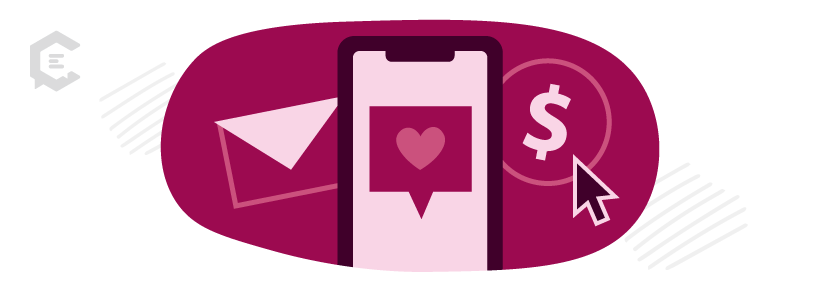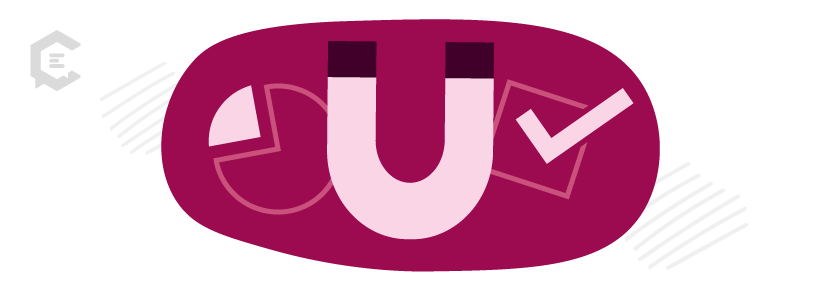Content marketing, inbound marketing, and digital marketing: These three types of marketing are often used interchangeably, but they don’t refer to the same thing. This can create confusion when implementing your brand’s marketing plan.
However, each of these types of marketing shares some things in common. They’re all designed to grab user attention, build your brand, increase traffic, attract qualified leads, and, ultimately, convert casual users into paying customers. However, they are individual concepts, each with its own sets of advantages and drawbacks. Here’s how they work together to cover all your online marketing basics.
Content marketing: It’s all about the content
When it comes to types of marketing, everyone’s heard of content marketing, but you may not understand how it differs.
Content marketing is the strategic use of valuable information conveyed in text, graphics, video, audio, or a combination of these, designed to build brand awareness and attract a prequalified audience of users who are interested in your products and services.
Longer text-based content tends to rank well in organic search results, but shorter, snack-sized content also works well.
Examples of content marketing include:
- Blog posts
- Videos shared on YouTube, Instagram Reels, and TikTok
- Podcasts
- Infographics
Advantages of content marketing
- Requires you to focus on your audience and their perceived needs
- Build trust with users by fulfilling those needs through the content you create
- Targeted audiences demonstrate less resistance to valuable content that doesn’t directly “sell”
- Well-crafted content is more likely to stand out in a crowded field and grab attention
- Scalable as your brand grows
Drawbacks of content marketing
- Requires a substantial investment of either time or money
- Creative content requires skilled and experienced content creators, no matter what medium you’re exploring
- Can take a long time to bear fruit
Digital marketing: A variety of channels
Digital marketing refers to tactics of promotional marketing and advertising that use purely digital channels. In some contexts, certain aspects of content marketing also qualify as digital marketing. For example, performing SEO on a written blog post or creating an explainer video could be categorized as either content marketing or digital marketing, or both.
Examples of digital marketing include:
- SEM
- PPC
- Social media marketing
- Email marketing
- Guest blogging outreach
- SEO of existing content
Advantages of digital marketing
- A broader digital marketing strategy lets you pivot your focus where you need it and add channels fairly easily.
- Digital marketing does not require much skill or experience. However, for optimized campaigns, skilled copywriters and graphic designers help paid ad consultants create the best results.
- It’s possible to see results fairly quickly.
Drawbacks of digital marketing
- There’s a fine line between permission-based tactics and intrusive ones, with many individuals resistant to intrusive variations like pop-up ads, even though they’re often effective.
- Technological updates and policy changes can render prior iterations ineffective (ad-blocking software, cookieless targeting, and tracking, etc.)
Inbound marketing: Based on user opt-in
Inbound marketing comprises those methods and tactics that require the prospect’s permission before landing in their sphere of awareness. As a phrase, it’s used to distinguish permission-based marketing techniques from more advertising efforts.
When trying to understand the different types of marketing, consider how the messaging is received by the intended audience. Outbound marketing demands attention and is intrusive.
Think of brochures hung from your doorknob or tucked under your windshield wipers, for example, or billboards that hug the side of the highway as you drive by. The user didn’t ask for any of those experiences. Rather, the brand pushed the message out to a wide audience.
By contrast, inbound marketing is inviting and non-intrusive. It puts the user in control by opting in to receive content from your brand.
Advantages of inbound marketing
- Inviting
- Puts the power in the hands of the user
- Results in more qualified leads and more efficient campaigns
Drawbacks of inbound marketing
- Requires more thought and customization
- Segmentation is key but adds technical complexity
- Outbound is simpler and easier
What’s the right choice for your brand?
The short answer is that most brands can benefit from all three types of marketing, plus a few outbound methods — they’re not necessarily a bad thing, and they definitely can be effective.
Take radio, for example. Loud, catchy radio ads may feel at first like an intrusive bit of outbound marketing. But, as many people who enjoy radio will tell you, they know they’re getting the music, sports, news, or another programming for free. Ads are just an accepted part of the experience, and almost become a form of inbound marketing. That’s because people give their permission to receive the ads just by listening.
Overall, when properly implemented, the combination of digital marketing with content marketing tactics is greater than the sum of those valuable parts. When you frame that approach with an inbound strategy, you appeal to a varied assortment of user personas. Round out that plan with a few targeted outbound techniques, and you’ll make the biggest, deepest impact possible on your prospects.
Put all three types of marketing to work for you
Now that we have a fuller understanding of how these three types of marketing differ, as well as what they share in common, we can begin to sketch out how they work together in support of a single brand.
As an example, let’s use a hypothetical B2C company that sells skincare to women with sensitive skin. The company’s goals include raising brand awareness and ultimately increasing sales of its core three-product starter kit. To accomplish these goals, the company has embraced an inbound strategy, including both content marketing and other forms of paid and organic digital marketing. It’s created a basic marketing funnel that includes a free two-week trial of its products.
How can our hypothetical business put all the pieces together in a cogent, practical way that moves it closer to its goals?
- Start with content. The company’s marketing team commissions an experienced content marketing writer to draft a useful how-to piece of over 2,000 words long about 11 things that aggravate sensitive skin. When the piece is polished and proofed, the company publishes it on the brand blog.
- Promote the content. The brand’s marketing team works to promote the piece using social media and targeting skincare influencers through outreach emails. The piece begins to attract attention.
- Refine the article. As the article gains traction, the marketing team makes sure the piece is refined and perfected, using the conversations it’s monitored on social media (especially on influencers’ accounts) to augment and update the piece accordingly. It also ensures the piece is optimized for search using primary and secondary keywords identified through keyword research and social media listening.
- Boost the article. Using paid digital marketing tactics, the company boosts the article’s reach through paid social media advertisements (particularly on Twitter and Instagram, where it’s seen the most active engagement), boosted posts through its Facebook page, and paid search ads (search engine marketing, or SEM).
- Capture leads. When users arrive at the newly optimized page, as they’re preparing to exit out, a pop-up invites them to join the company’s email list to receive a free ebook that discusses how women can respond to and treat those 11 triggers for sensitive skin. The subscribers are added to the email list and given a download link for the ebook.
- Start delivering an email sequence. All new subscribers are emailed a sequence of messages that build interest in the company’s products, culminating in an offer for a free trial of the core regimen. Those samples are delivered to the prospects through a shipping company or the USPS. Two weeks later, the recipients of the trial receive an email message with a promo code offering a discount on the full-size products.
This sequence helps fill the marketing funnel and move prospects along the path toward a purchase. It uses an inbound methodology and incorporates content marketing that’s then promoted and built upon by digital marketing strategies. While it’s a simplified path, you can borrow it as a template. Build on it by expanding the tactics to reach your brand’s specific audience.
Talk to a content specialist today about creating a marketing strategy that combines the power of content marketing, digital marketing, and inbound marketing. Achieve your goals and keep customers engaged with a comprehensive marketing strategy that covers all bases.






